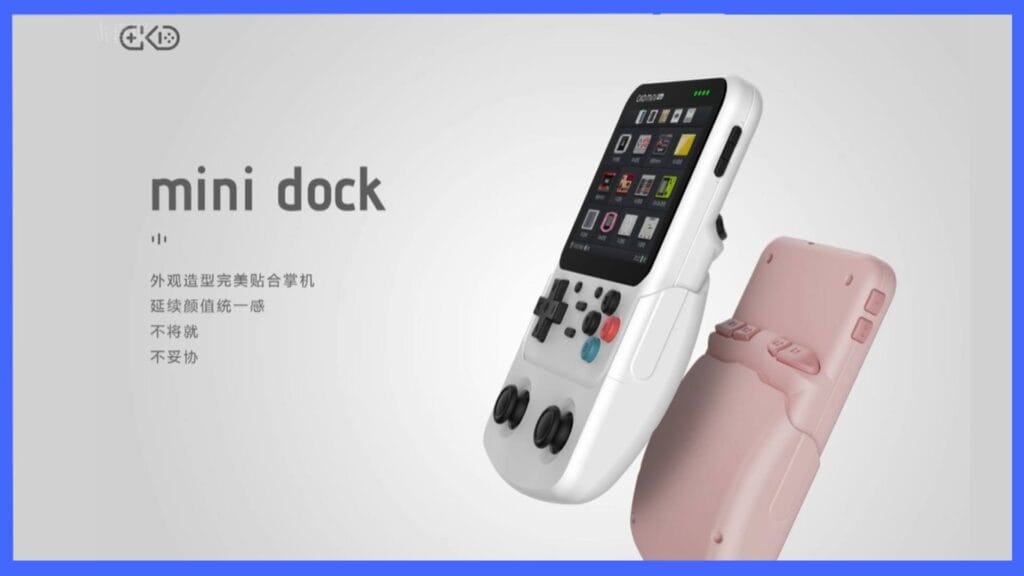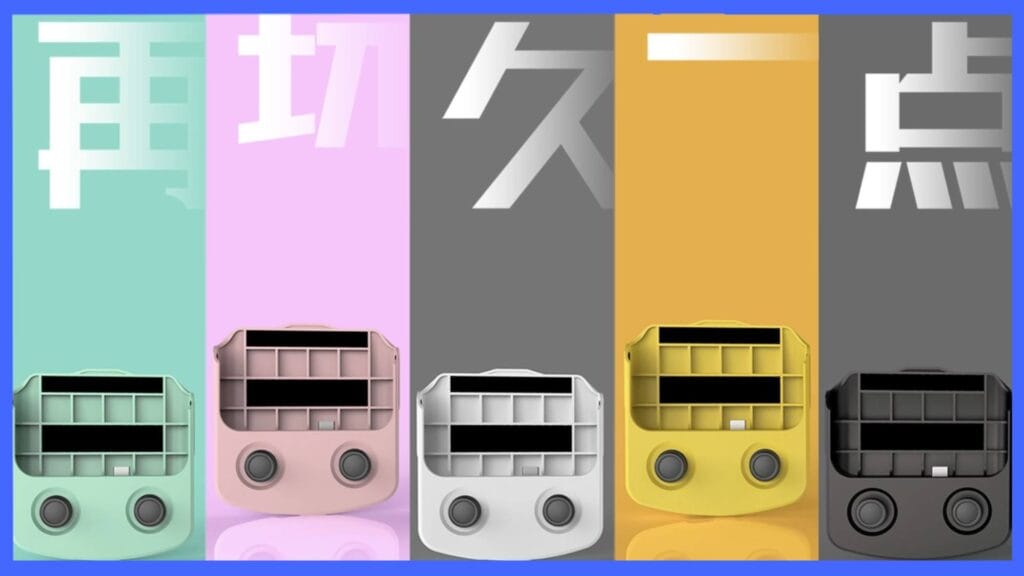Given the popularity of the Miyoo Mini, it was only a matter of time before more and more companies got in on the action.
So far, many of the copycat consoles have left quite a bit to be desired. We all know how it works. Something gets big, then every company knocks out an inferior and often rushed console to meet demand. Fun times.
The GKD Mini Plus doesn’t look to be falling into that trap, though, and what we’ve seen so far has us intrigued by the possibilities.
GKD Mini Plus Classic Explained

In short, the GKD Mini Plus Classic is a micro-console with a twist. It’s smaller than a Game Boy Color, but what separates this console from the Miyoo Mini is that GKD has found a solution to games that require dual analog sticks.
PS1 on the Miyoo Mini wasn’t great due to the lack of sticks. For SNES and below, sure, it’s all good. But the moment 3D comes into the mix, problems arise. There’s also the issue of how do you do higher-end emulation without sticks? You can’t.
Where are we going with this? GKD has solved this solution by including a detachable add-on that includes dual control sticks and connects via USB-C.
It’s not often we’re blown away by new ideas but this is pure genius and gives users the choice of playing with or without the sticks based on the type of games they want to play.
GKD Mini Plus Classic Specs
These specs are nearly identical to that of the Anbernic RG503.
The RG503 was a bit of a disaster. It was fine, but the lack of RAM seemed to bottleneck the amount of power this device could handle, resulting in less-than-impressive emulation.
The GKD Mini Plus, meanwhile, is supposedly coming out with 1GB of RAM, which isn’t a lot, but should be able to make some use of the RK3566 chipset.
- Chipset: RK3566
- CPU: Cortex-A55 at 1.8GHz
- GPU: Mali-G52 2EE
- RAM: 1GB
- Screen: 3.5-inch 4:3 OCA IPS at 640 by 480 resolution
- Battery: 3000 mAh
- Storage: Dual external microSD
- Operating System: Linux
Emulation on the GKD Mini Plus

According to our pals over at RetroKezins, the GKD Mini Plus is targeting up to N64, PSP, and Dreamcast.
Is that possible? We’d wager yes. The RK3366 chipset is powerful enough and we’ve not seen it utilized to its full potential yet. Combine that with the 1GB of RAM and it is, as we say, on-par with the RG503.
Incidentally, 4GB of RAM is, roughly, about what’s needed for Android to get up and running so it’ll be interesting to see what’s possible with that limitation.
At the moment, the demo units come with JELOS, a version of Linux, though the final version won’t be running that.
It’ll be interesting to see what the custom firmware scene comes up with. An Android port combined with the RK3366 chipset could seriously be something to be messed with.
- Sega: Genesis/Mega Drive, Master System, Game Gear, SegaCD, Sega32x, Dreamcast
- Nintendo: NES, SNES, Gameboy, Gameboy Advance, N64
- Sony: PlayStation
- Misc: PC Engine, WonderSwan, Mame, FBNeo, Neo Geo
Price
The GKD Mini Plus is set to come in at 469¥ and 499¥. That’s roughly around $75, which if the conversion is to be believed would put it neck and neck with the Miyoo Mini. That’s never how these things work, though.
Release Date
The Kickstarter is now live with the cheapest edition of the console coming in at $139.
For more information, you can also check out the GKD website.
Conclusion
While we don’t know how much the GKD Mini Plus will cost when it reaches western shores, if it comes in at around the $100/£100 to $130/£130 mark this could be a serious contender for the Miyoo Mini’s tiny crown.
The Miyoo Mini is great as a novelty console but it lacks any real sense of power. Throwing in the RK3366 chip and 1GB is sure to give GKD the advantage when it comes to emulating a few tiers above SNES and Genesis/Mega Drive.
Of course, we’ll have to wait and see what’s what before we pass judgment, but for now, the GKD Min Plus Classic is definitely worth keeping an eye on. It may even make our list of the best emulator handheld consoles available this year.

